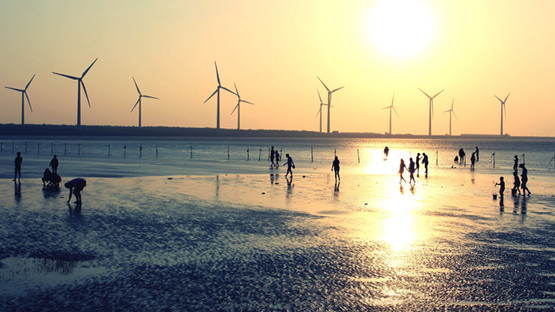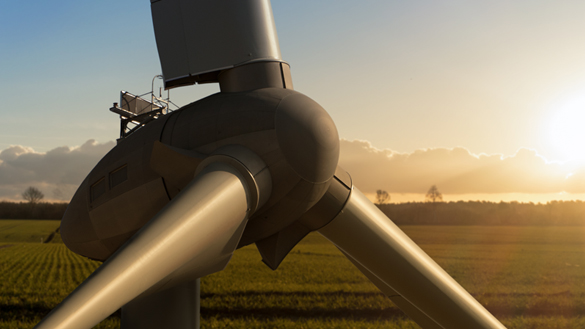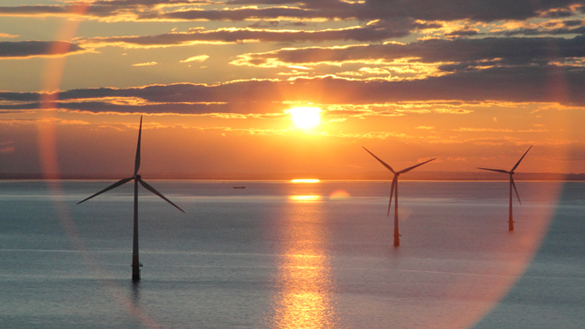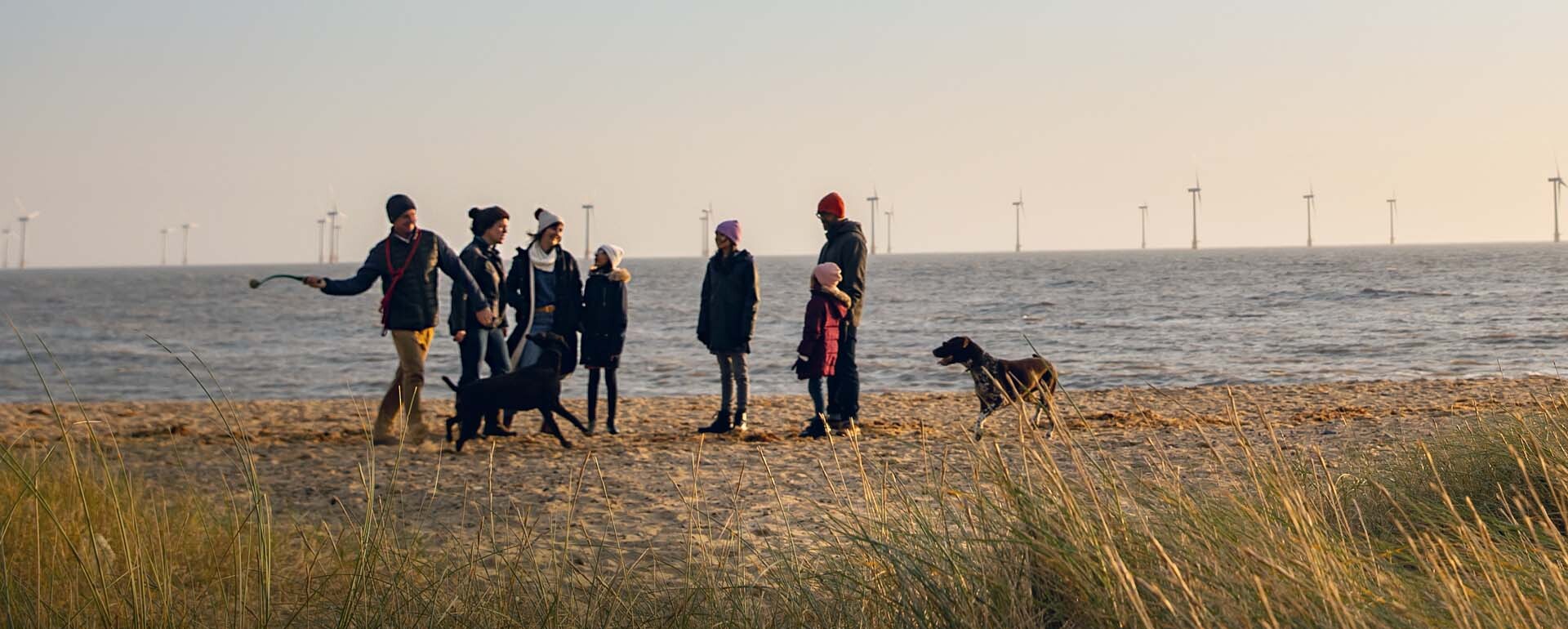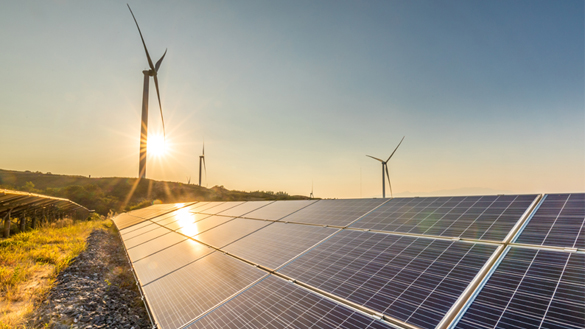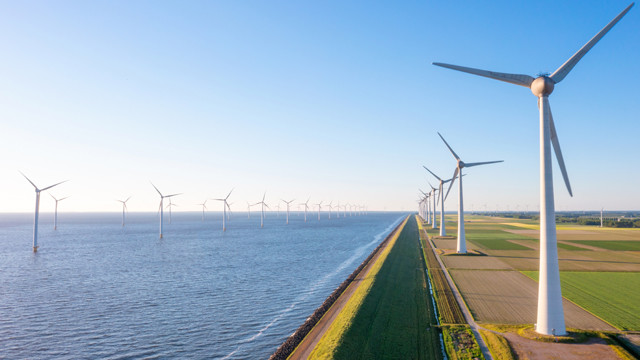
Onshore vs offshore wind energy: what’s the difference?
From the wind farms that dot our landscapes to the vast installations off our coastlines, both offshore and onshore wind power play a central role in the transition to a carbon-free electricity system.
The technology that onshore and offshore wind turbines use to generate electricity is essentially the same. Where the two differ is in their position, size, scale and how the electricity they generate is transferred.
What is onshore wind energy?
Simply put, onshore wind energy is the power that’s generated by wind turbines located on land driven by the natural movement of the air. You’ll often see onshore wind farms in fields or more rural areas, as they’re usually constructed in less-populated areas where buildings and obstacles don’t interrupt the air.
Onshore wind has been capturing and converting wind power in some form since the 1880s (to make corn or drive pumps), but the opening of the Delabole wind farm in 1991 heralded the commercial era of onshore wind in the UK.
Today there are more than 1,500 operational onshore wind farms across Great Britain, generating over 12 gigawatt hours (GWh) of electricity for the national electric system. In 2020 onshore wind contributed 11% of the UK’s electricity needs, with a total 34.7 terawatt hours (TWh) generated – more than enough to power 18.5 million UK homes for an entire year.
Advantages of onshore wind power

Reduced environmental impact
An onshore wind farm’s construction and operation creates significantly less emissions than other energy sources, while the sites they’re placed on can still be farmed.- Cost effective
It’s one of the least expensive forms of renewable energy (along with solar PV) and significantly less expensive than offshore wind power. Cheaper infrastructure and costs to run means onshore farms can help lower electricity bills. - Quicker installation and easier maintenance
Onshore wind farms can be constructed in months, at scale, and are relatively cheap and cost-effective to maintain compared with offshore. - Job creation
Our own analysis in the Job That Can’t Wait report reveals that 400,000 jobs are needed in the energy sector to deliver net zero by 2050 – the creation of both onshore and offshore wind farms in that period could create up to 60,000 jobs.
Disadvantages of onshore wind power
- Changing wind speeds
The consistency of electricity generation from wind farms can be challenged by varying wind speeds and changes in wind direction. - No wind or intermittent generation
When the wind is intermittent (or non-existent) electricity can’t be generated using wind power. To meet our energy requirements we’ll need a mix of solutions to rely on, including other renewable energy sources, as well as receiving clean energy through interconnectors and improved management of energy demand. - Effects on people and nature
Some people complain about the appearance of wind farms on the landscape and noise. There are also some worries that onshore wind turbines may pose a threat to birds (find out more about this in our article How does a wind turbine work?) - Lesser power generation
Onshore wind farms produce less energy than their offshore counterparts (called their ‘capacity factor’) because onshore planning often limits the turbines' ‘tip heights’, which doesn’t apply to offshore turbines. An average onshore wind turbine produces around 2.5 to 3 megawatts (MW), in comparison to the offshore average of 3.6 MW.
What is offshore wind energy?
Offshore wind farms generate electricity from wind blowing across the sea. They are considered more efficient than onshore wind farms, thanks to the higher speed of winds, greater consistency and lack of physical interference that the land or human-made objects can present.
The UK is the world leader in offshore wind. As of 2020 there were nearly 2,200 wind turbines across 35 offshore windfarms off the coast of England, Scotland and Wales. In the same year they produced 40.7 TWh – up 27% from 2019 – and contributed 13% of the UK’s electricity needs.
Advantages of offshore wind power
- Offshore wind turbines are more efficient
Higher wind speeds and consistency in direction means offshore installations require fewer turbines to produce the same amount of energy as onshore wind farms. - Reduced environmental impact
Being miles out from the coast, offshore turbines are further away from the local population. Restricted access to their sites may even help to protect the surrounding marine ecosystems. - More space to construct in
Oceans provide the perfect location to build wind farms in terms of scale and openness. More wind farms being built means more clean, sustainable energy can be produced.
Disadvantages of offshore wind power
- Higher cost
Offshore wind farms require more complex infrastructure to support them and, as a result, are more expensive to construct. - Maintenance and repairs
Higher wind speeds, strong seas and accessibility issues makes offshore wind farms more challenging to maintain. - Less local involvement
While onshore wind turbines can be owned or operated by local cooperatives, or even by individuals, offshore wind turbines require a considerable scale of investment that means they’re usually corporately owned. However, they do provide significant employment for the development and working life of the wind farm.
Full power: the world’s largest wind farm
The Hornsea Phase 2 offshore wind farm will become the largest wind farm in the world, when operational in 2022. It will generate 1.3GW of green energy from 165 8MW wind turbines, which is enough to supply 1.4 million homes.
The future of wind energy in the UK
By 2050 the UK will consume more than twice the amount of electricity than today*, driving the need for four times more clean energy generation and double the grid capacity. The UK government has outlined ambitious plans to increase our offshore wind capacity to 50GW by 2030, which would more than triple the current output.
To make this happen, there are a variety of solutions in the pipeline, including:
1. Multi-purpose interconnectors
Instead of individual wind farms connecting one by one to the shore, Multi-purpose interconnectors (MPIs) will allow clusters of offshore wind farms to connect all in one go, plugging into the energy systems of neighbouring countries and making it even easier to share clean energy between countries.
We’re already very involved in the development of this new generation of interconnector.
2. Floating wind farms
Unlike existing offshore wind farms, these revolutionary ‘floating farms’ don’t need to be fixed to the sea bed, instead using anchors to keep them in place, similar to a boat. This means they can be positioned in much deeper sea areas, meaning there’s more room for bigger turbines that generate larger amounts of power.
3. Energy Islands
Energy Islands will play a part in the evolution of offshore wind infrastructure by acting as state-of-the-art ‘clean energy hubs’. They will enable the connection of offshore wind to multiple countries via MPIs, while also serving as a platform for the production and delivery of green hydrogen.
Last updated: 30 Mar 2022
The information in this article is intended as a factual explainer and does not necessarily reflect National Grid's strategic direction or current business activities.
The future of offshore energy
The windiest part of the UK is offshore, out at sea, so putting windfarms out there is the perfect source of renewable energy for us. Find out more about the advances being made in offshore energy and how we'll be using it to generate much more clean energy for a net zero future.
Watch our video